The Night the ’60s Died: How the News of Sharon Tate's Death Spread Through Hollywood
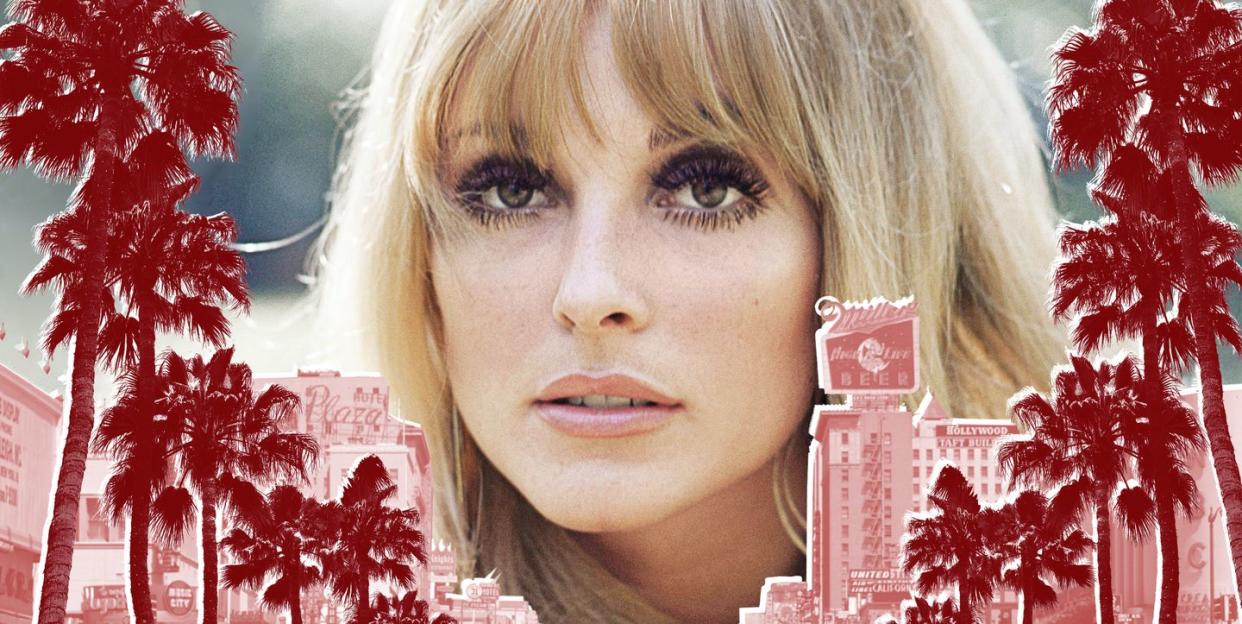
- Oops!Something went wrong.Please try again later.
- Oops!Something went wrong.Please try again later.
- Oops!Something went wrong.Please try again later.
- Oops!Something went wrong.Please try again later.
This story was originally published in 2019, on the 50th anniversary of the murder of actress Sharon Tate, three of her friends, and an unlucky stranger by members of the Manson Family cult. Below, we’re republishing the story on how the news of this tragedy spread through Hollywood
Many people I know in Los Angeles believe that the Sixties ended abruptly on August 9, 1969,” Joan Didion has written. “Ended at the exact moment when word of the murders on Cielo Drive traveled like brushfire through the community, and in a sense this is true.”
Those murders—of the actress Sharon Tate, three of her friends, and an unlucky stranger—took place 50 years ago this summer. The brutal slayings continue to be a dark stain on the city’s fabric, and in the coming months they will be revisited in such films as Quentin Tarantino’s Once Upon a Time in Hollywood and Mary Harron’s Charlie Says, undoubtedly provoking more gossip, speculation, and mythmaking.
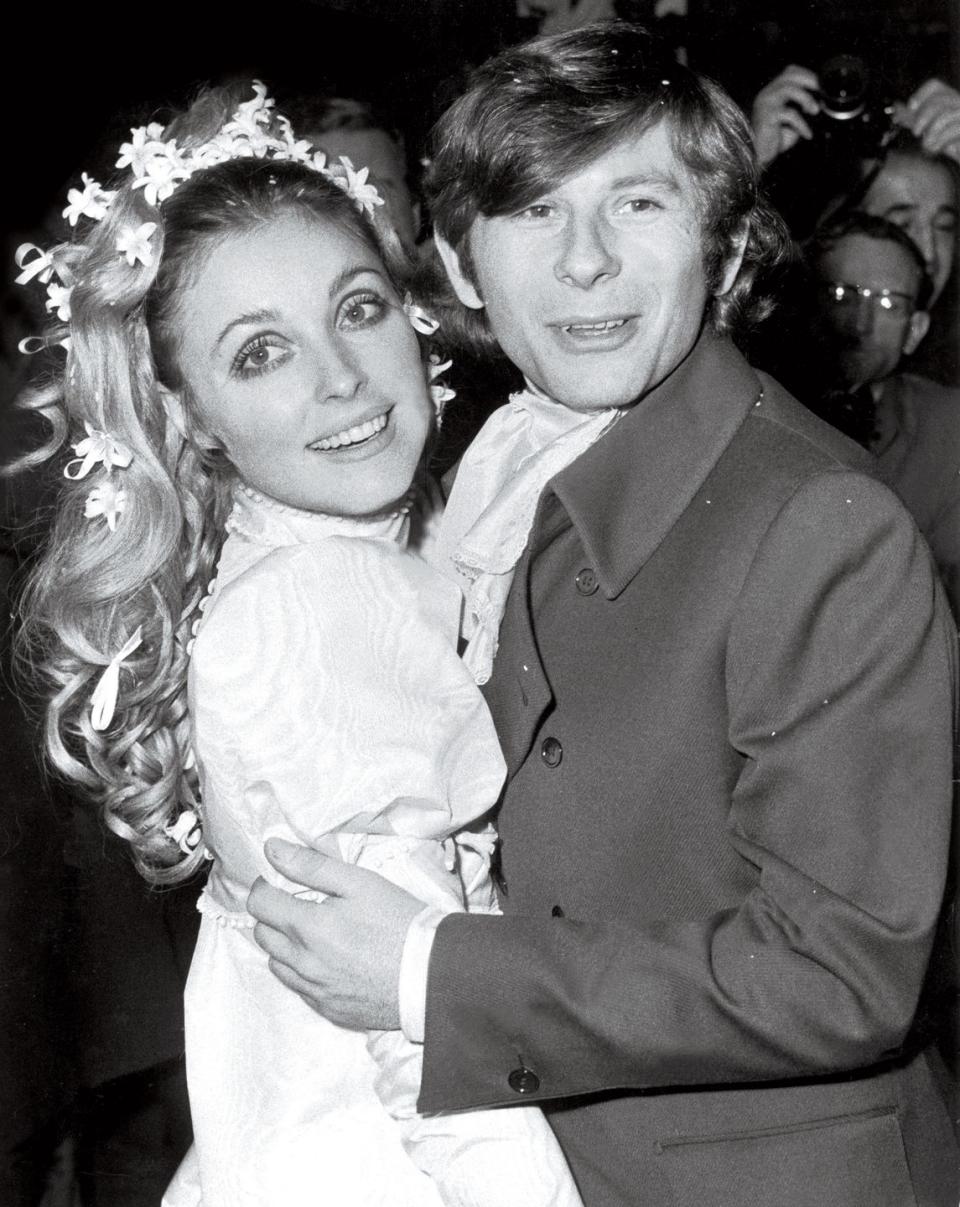
Back in 1969, Roman Polanski, 35, and Sharon Tate, 26, were often at the center of the world’s most dynamic creative circles. He was the foremost international director of his generation, hot off the success of Rosemary’s Baby, and she was a Golden Globe nominee for Valley of the Dolls. Tate was a Texas-born army brat who had early success as a model and actress, while the French-born Polanski was a child of the Holocaust, having grown up in Poland after his parents were taken to concentration camps when he was six.
Sharon and Roman fell in love working together on his film The Fearless Vampire Killers, and when they married, in London in January 1968, the haut monde of the swinging ’60s danced at their wedding reception. Photographer Peter Evans called them “the imperfect couple… cool, nomadic, talented, and nicely shocking.”
By July of the next year, Sharon was expecting their first child, and she returned from Europe to the house they had rented at 10050 Cielo Drive, in Los Angeles’s Benedict Canyon. Two friends, the aspiring director Voytek Frykowski, 32, and his book editor-girlfriend, Abigail Folger, 25, an heiress to the Folger’s coffee fortune, had been living there while Polanski and Tate were in Europe and stayed on when she returned. Tate liked to have people around her, particularly with Polanski away, and friends were constantly in and out.
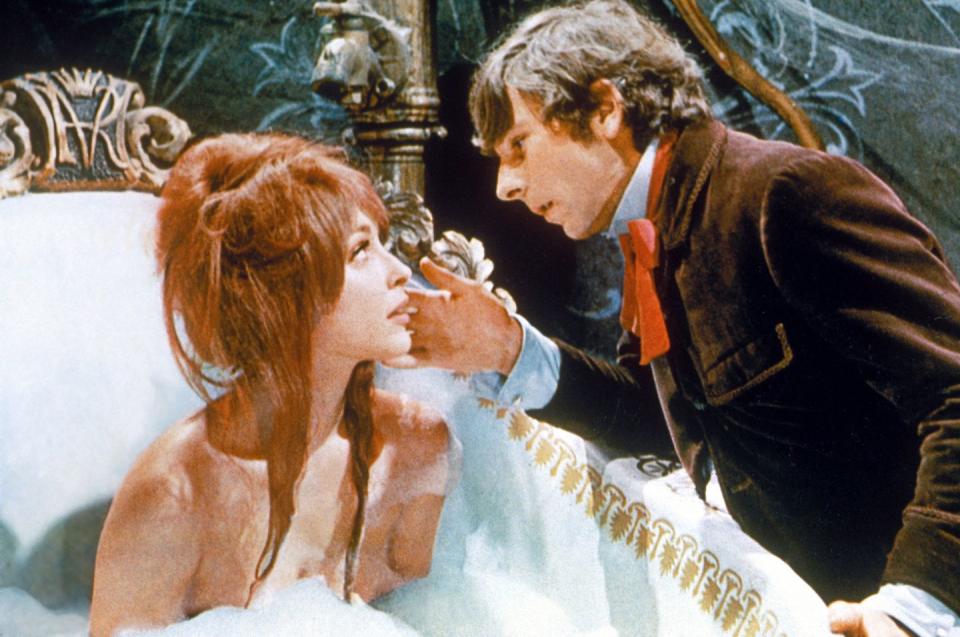
On Saturday, August 9, Los Angeles awoke to learn—slowly and then frantically—of the gruesome murders of Tate, Frykowski, Folger, and Jay Sebring, 35, a hair stylist to the stars and former boyfriend of Tate’s. Steven Parent, 18, was killed in his car after visiting the house’s caretaker. Early that morning, the cleaning woman arrived to discover the mutilated bodies and, on the walls, words written with blood.
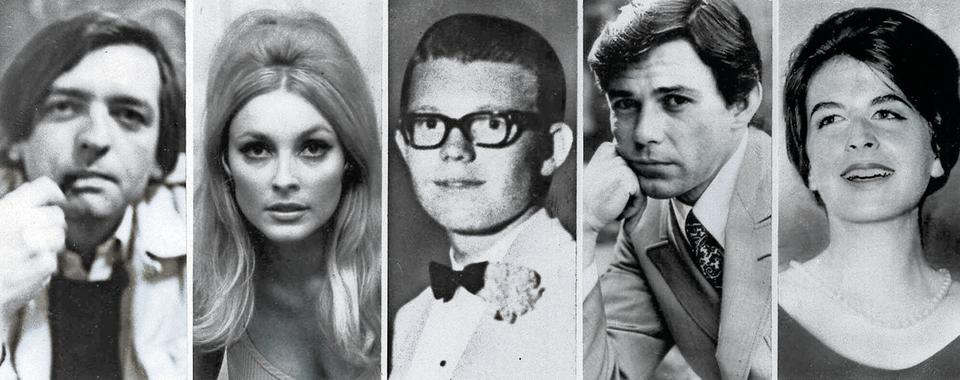
Then, only a day later, two more people—grocery store owner Leno LaBianca and his wife Rosemary—were murdered in another part of town. The killings shook the city like an earthquake.
Taking our cue from Didion’s brushfire imagery, we have compiled the story of just how the news spread, told by those who were there and remember it all too well half a century later.
In the Beginning
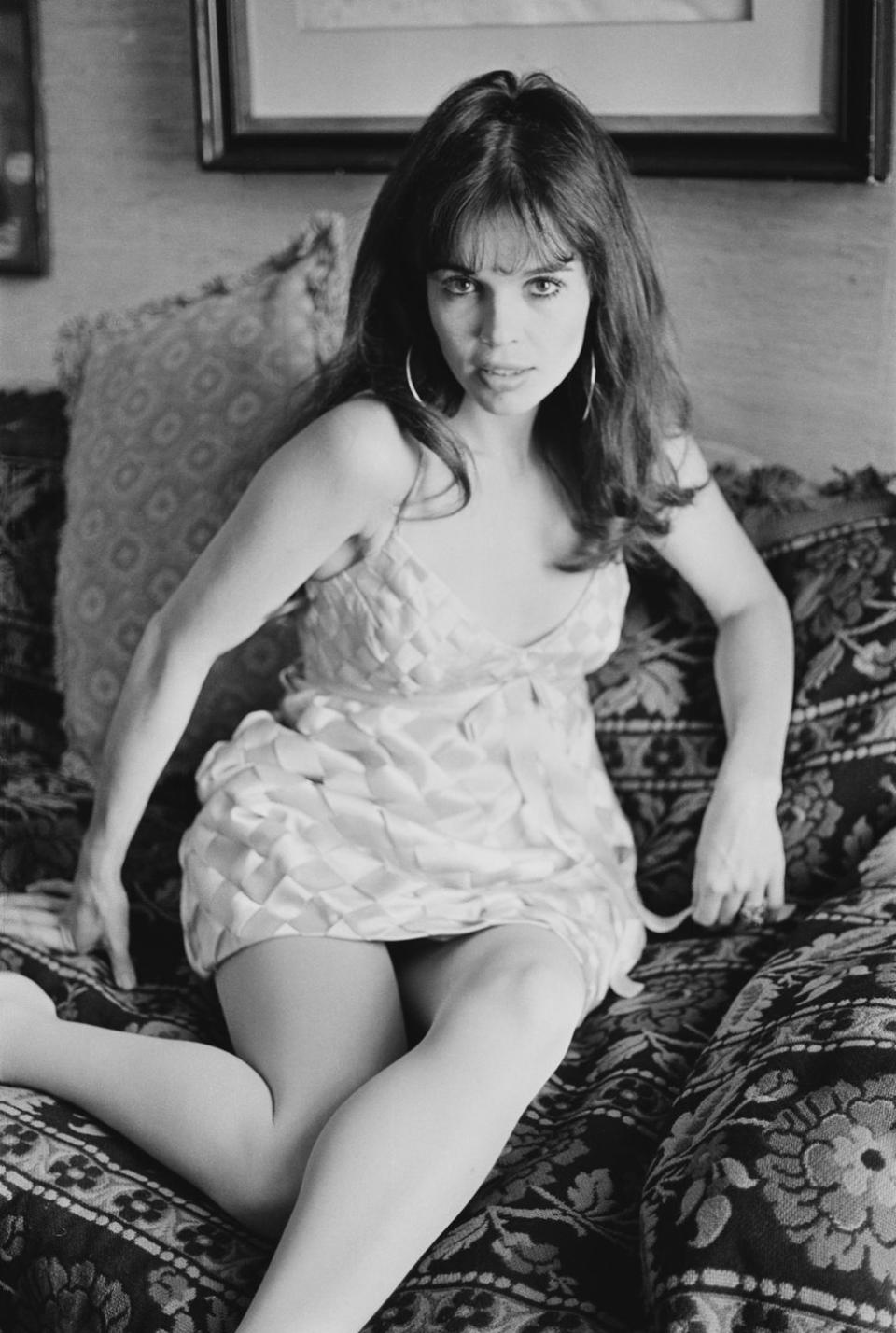
Viviane Ventura (actress and author):
“One day Roman told me, ‘I have met the most beautiful American actress. It’s the first time I’ve been tongue-tied.’ He wasn’t the handsomest, but he had a tremendous capacity to seduce. At their wedding in London, Sharon wore a crown of flowers. She was such a beauty. I wish I could convey how humble, kind, and genuinely nice she was.”
Candice Bergen (actress who lived at 10050 Cielo with music producer Terry Melcher before the Polanskis moved in, writing in her 1984 memoir, Knock Wood):
“Surrounded by tall, thick pine trees and cherry blossoms, with rose-covered rail fences and a cool mountain pool grown over with flowers, it snuggled up against a hillside—a gingerbread hideout that hung high above the city… It was a fairy-tale place, that house on the hill, a Never-Never Land far from the real world where nothing could go wrong.”
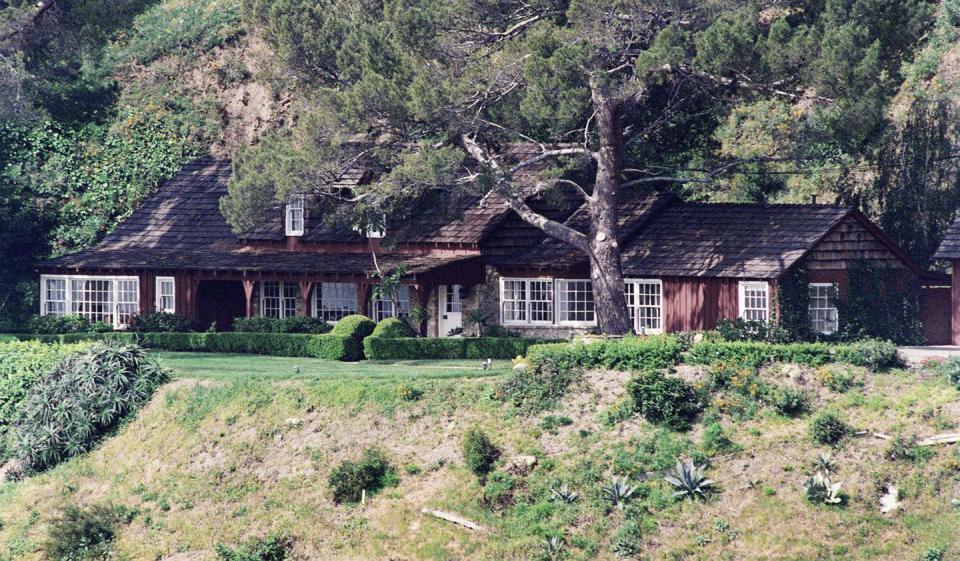
Henry Jaglom (director):
“[Barbara Flood and I] were walking on King’s Road in London, and Roman drove by in a little red convertible with Dick Sylbert. They waved at us, stopped for hellos and [made] plans to see us that evening, not knowing that at that exact moment his eight-month-pregnant wife was being brutally, insanely killed in their Hollywood house. By the time the car came around to wave at us a second laughing time, Sharon and four others were dead…”
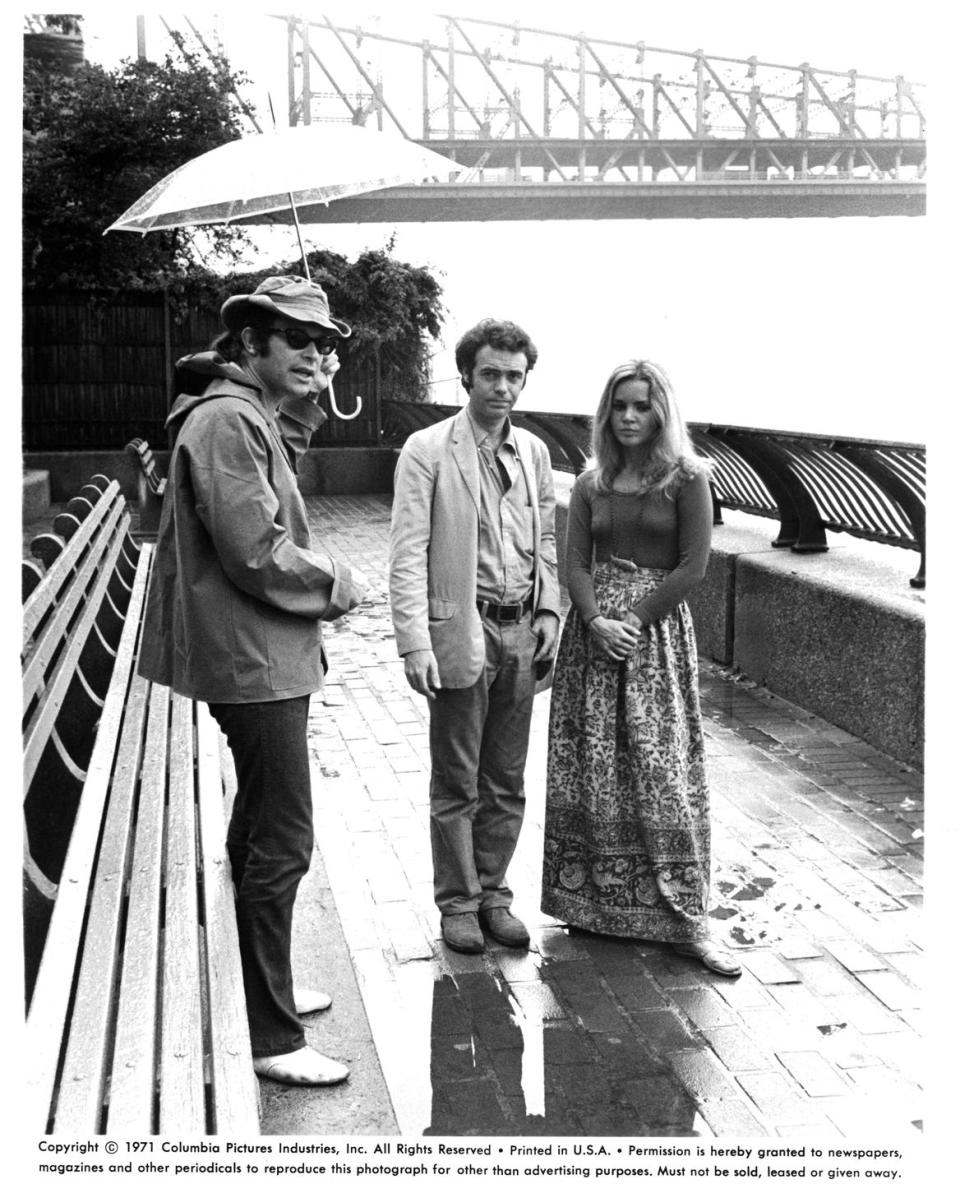
The Night in Question
Richard Correll (director):
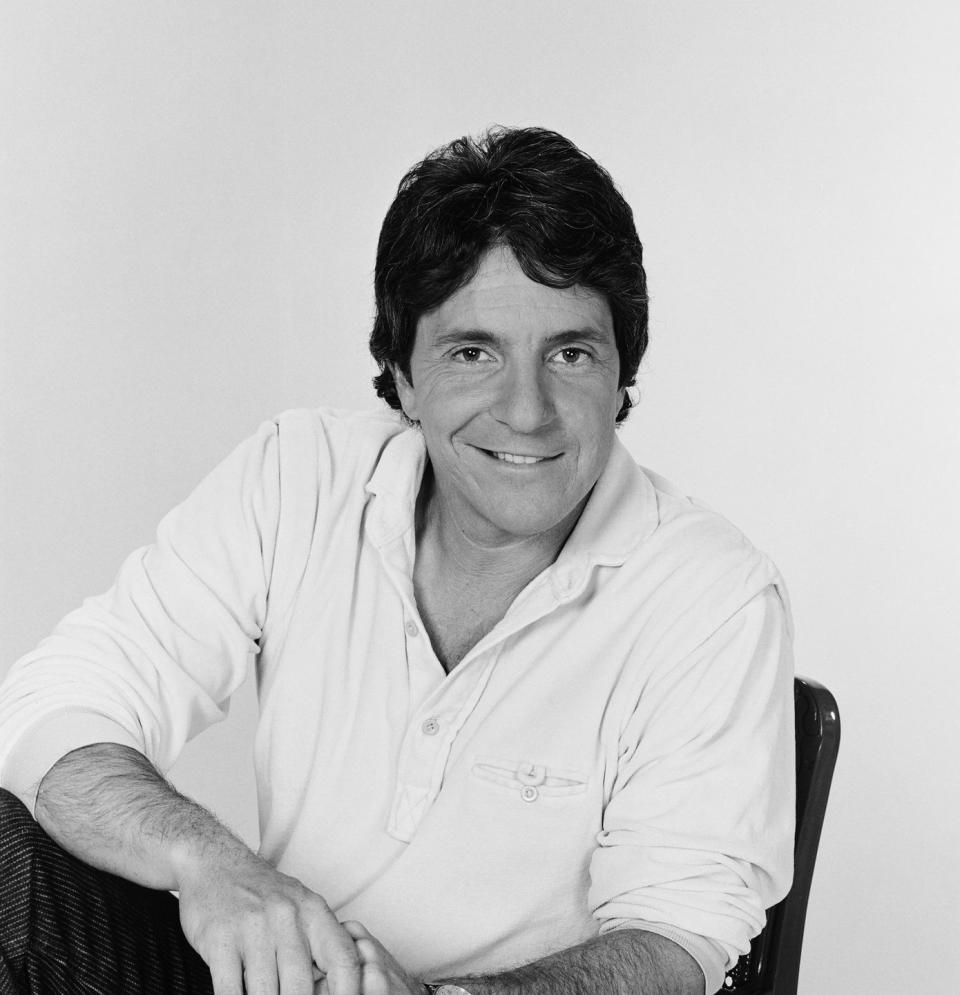
“I was a senior at USC and was helping Harold Lloyd preserve his films at his Beverly Hills estate. Harold knew I was dating his granddaughter Suzanne, but he didn’t know I often parked my car at the lower end of the property late at night and snuck back into the house so Sue and I could have several hours of fun together. As usual, it was about 3:30 in the morning when I left. Everything was so quiet at that hour. I was about to turn right onto Benedict Canyon when I heard and then saw a car driven by a man with long hair, what looked like another man in the passenger seat, and a couple of young women in the back. Their windows were down, music was blaring, and they were carrying on so loudly I thought they must be drunk college kids. They were no more than 10 feet in front of me.”
Rona Barrett (gossip columnist):
“I got a call from a police source I trusted, and seconds later a call came in from a reporter friend in New York, both saying something bad had happened at Sharon and Roman’s house. I lived right around the corner, so I was there in a matter of minutes. I drove up the driveway and saw a sedan with a dead body slumped behind the steering wheel. Then a whole group of detectives converged on the property. As they walked up toward the house, I heard one of them say ‘Oh my God’ and watched them covering another body on the lawn.”
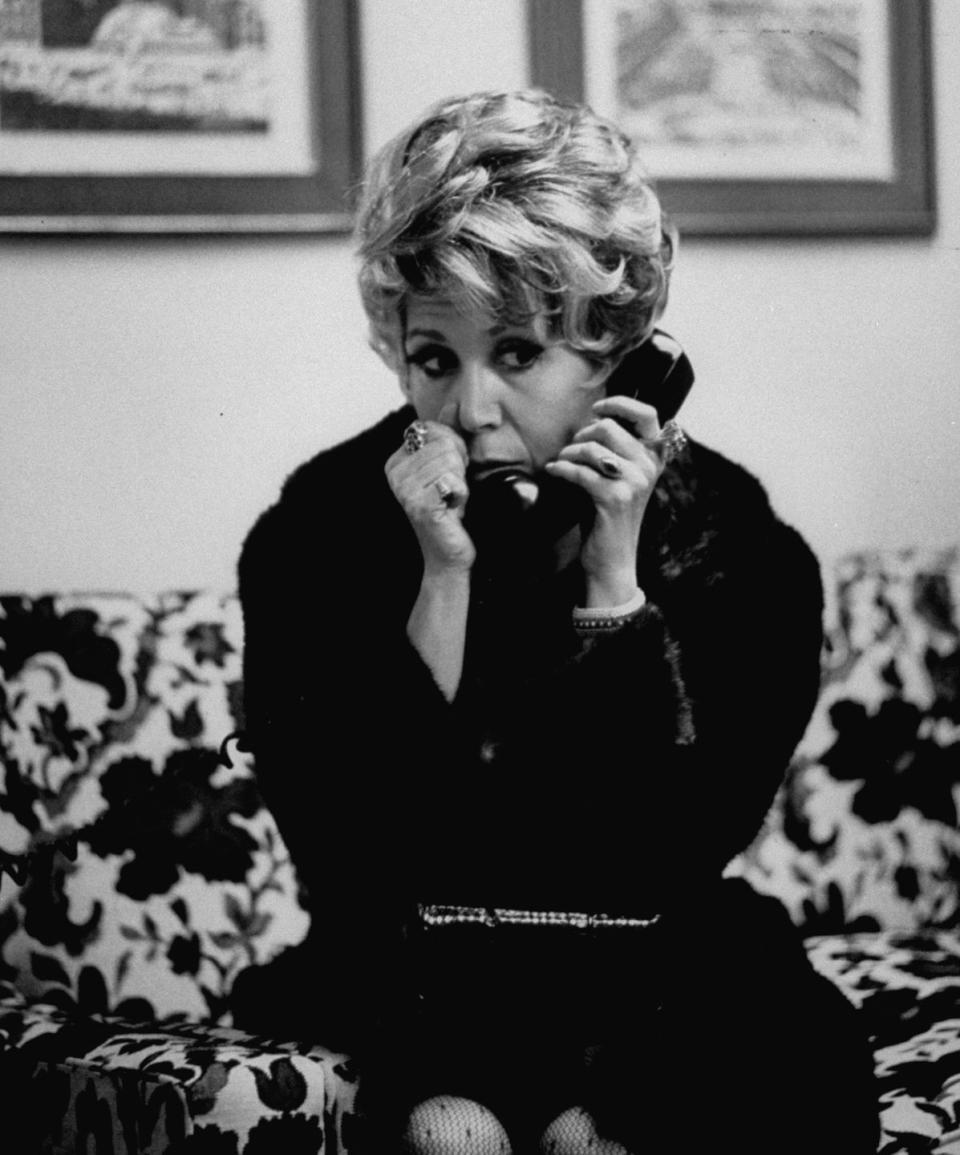
Steven V. Roberts (journalist):
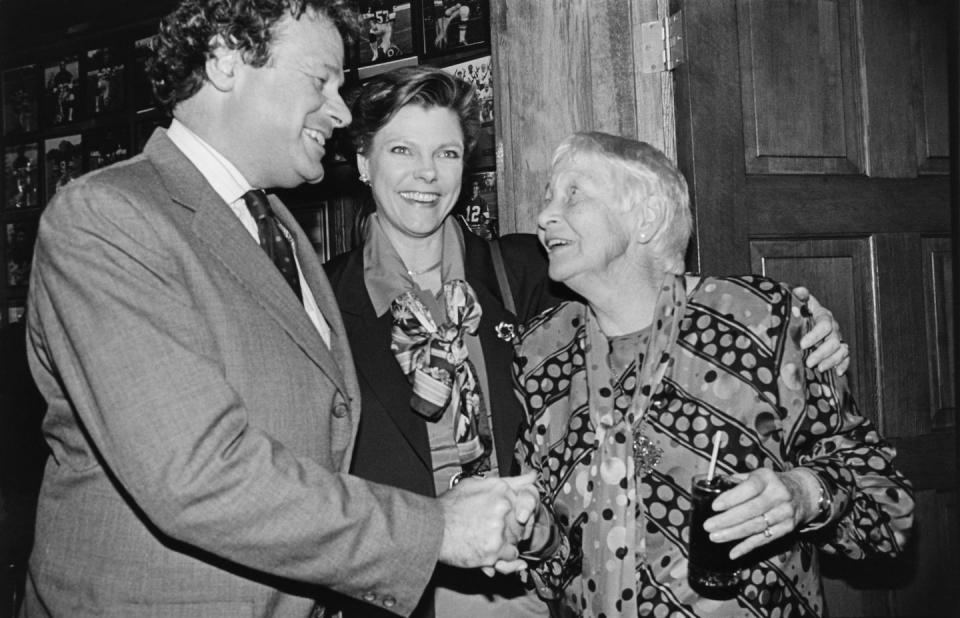
“I was all of 26, but I had been the New York Times bureau chief in Los Angeles for several months. [My wife] Cokie and I lived in a house in Malibu, and that Saturday morning we were discussing our plans for the day with Jean and Paul Firstenberg, who were visiting. When the phone rang, the desk editor in New York told me that the Associated Press was flashing that there was a murder in Hollywood and he wanted me to investigate. I told him, ‘I don’t do murders.’ But then he said that it was Roman Polanski’s house, and for some reason I remembered he was married to Sharon Tate. ‘Yeah, they think she might be one of the bodies.’ At that point I agreed that I did do murders, so I grabbed my portable typewriter and headed into town."
Neile Adams McQueen (actress, singer, former wife of Steve McQueen):
“We were supposed to join Jay [Sebring] for dinner on Cielo Drive that night, but Steve and I had gotten into an argument, and I said I was staying home. Steve took off on his motorcycle, but he never got there because he ran into a girl he knew. He was still sound asleep when the calls started coming in that Saturday morning. Finally Steve’s assistant said, ‘You have to wake him up. Something terrible has happened.’ It turned out that Voytek’s face had been so battered, at first everyone thought it was Steve. Nobody knew what was happening or who had been killed. We just knew it wasn’t Steve.”
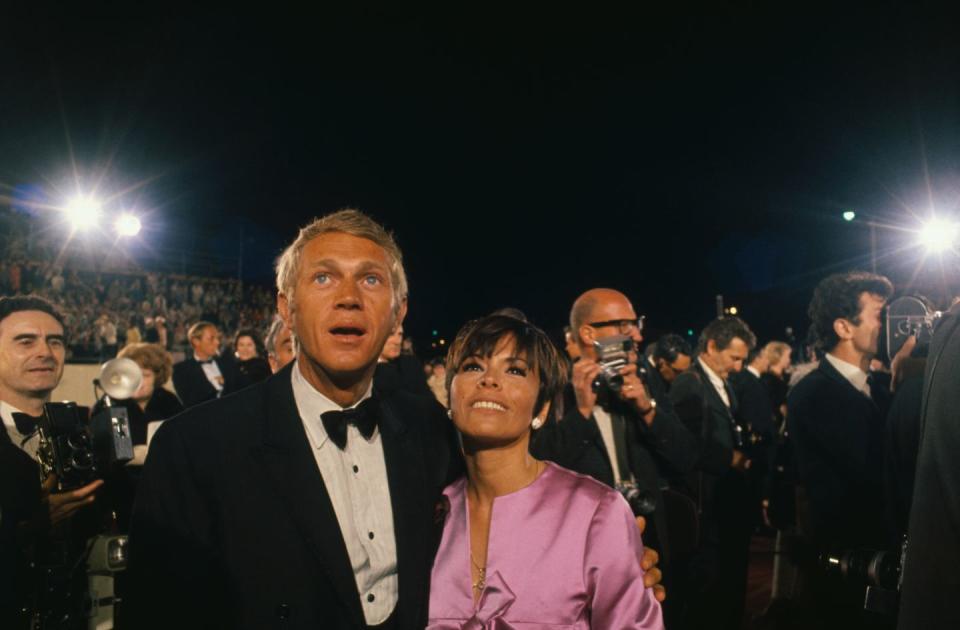
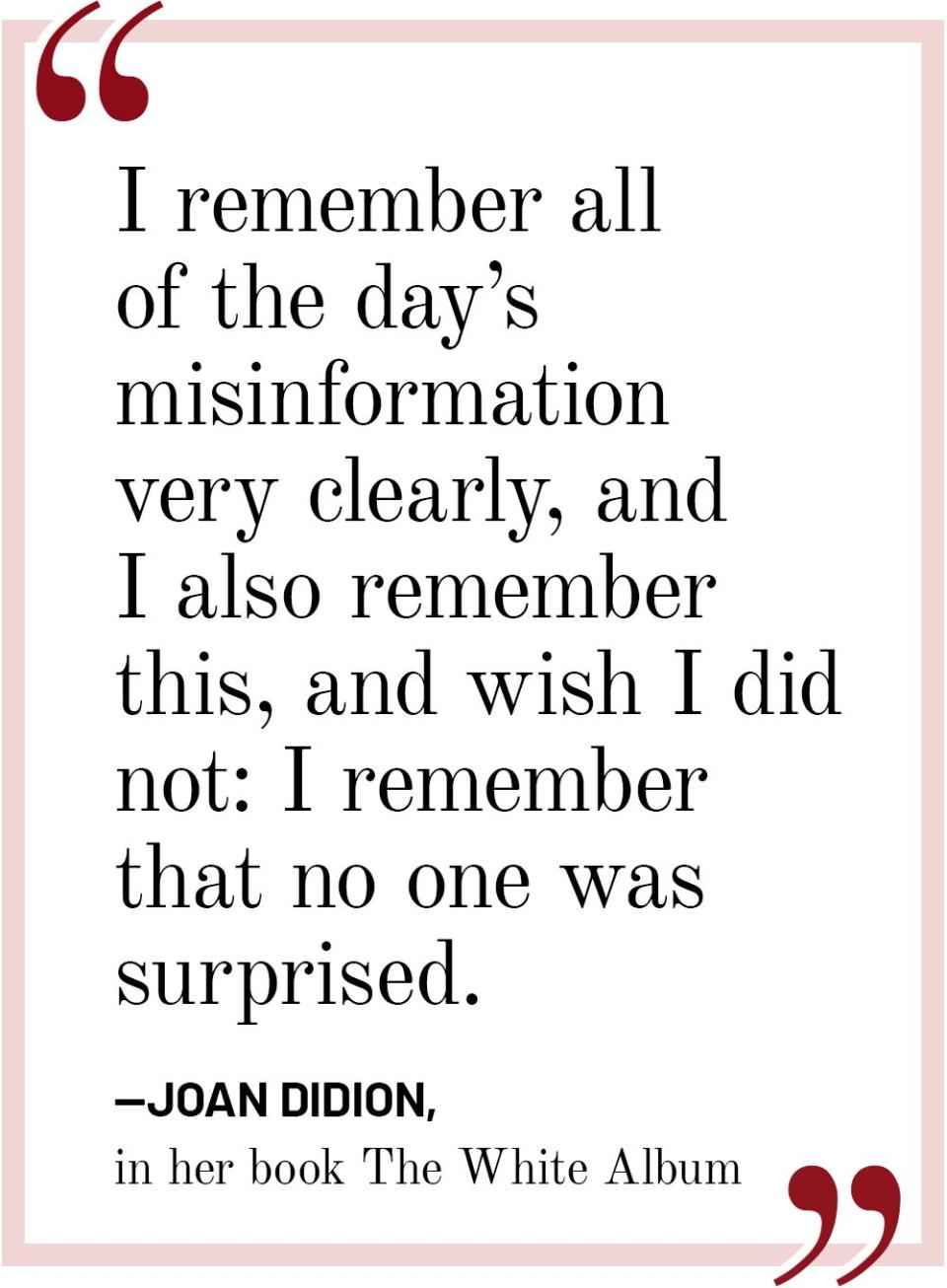
Joan Didion (writer, in her book The White Album):
“I was sitting in the shallow end of my sister-in-law’s swimming pool in Beverly Hills when she received a telephone call from a friend who had just heard about the murders at Sharon Tate Polanski’s house on Cielo Drive. The phone rang many times during the next hour.”
Robert Evans (former head of production at Paramount Pictures):
“I had picked up [Gulf + Western chief] Charlie Bluhdorn at the Beverly Hills Hotel that Saturday morning and brought him to my house to work. Joyce Haber of the Los Angeles Times called, saying it was urgent and she had to interrupt. When she heard my voice, she started wailing, ‘You aren’t dead! You aren’t dead!’ ‘Joyce, what are you talking about? Of course I’m not dead.’ ‘You didn’t hear?’ ‘Hear what?’ ‘It’s on the radio. Last night at Sharon and Roman’s house on Cielo. They’re all dead.’”
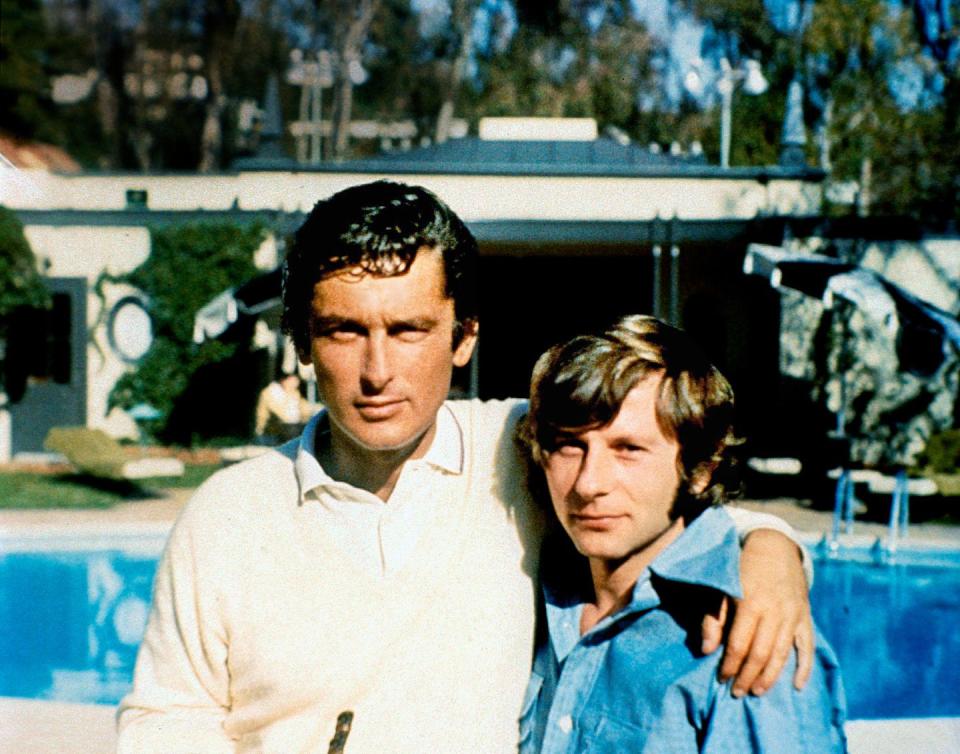
Viviane Ventura:
“There wasn’t the instant news then that there is today. I was in London and got a call in the middle of the night telling me this terrible tragedy had happened. I couldn’t even talk through the crying.”
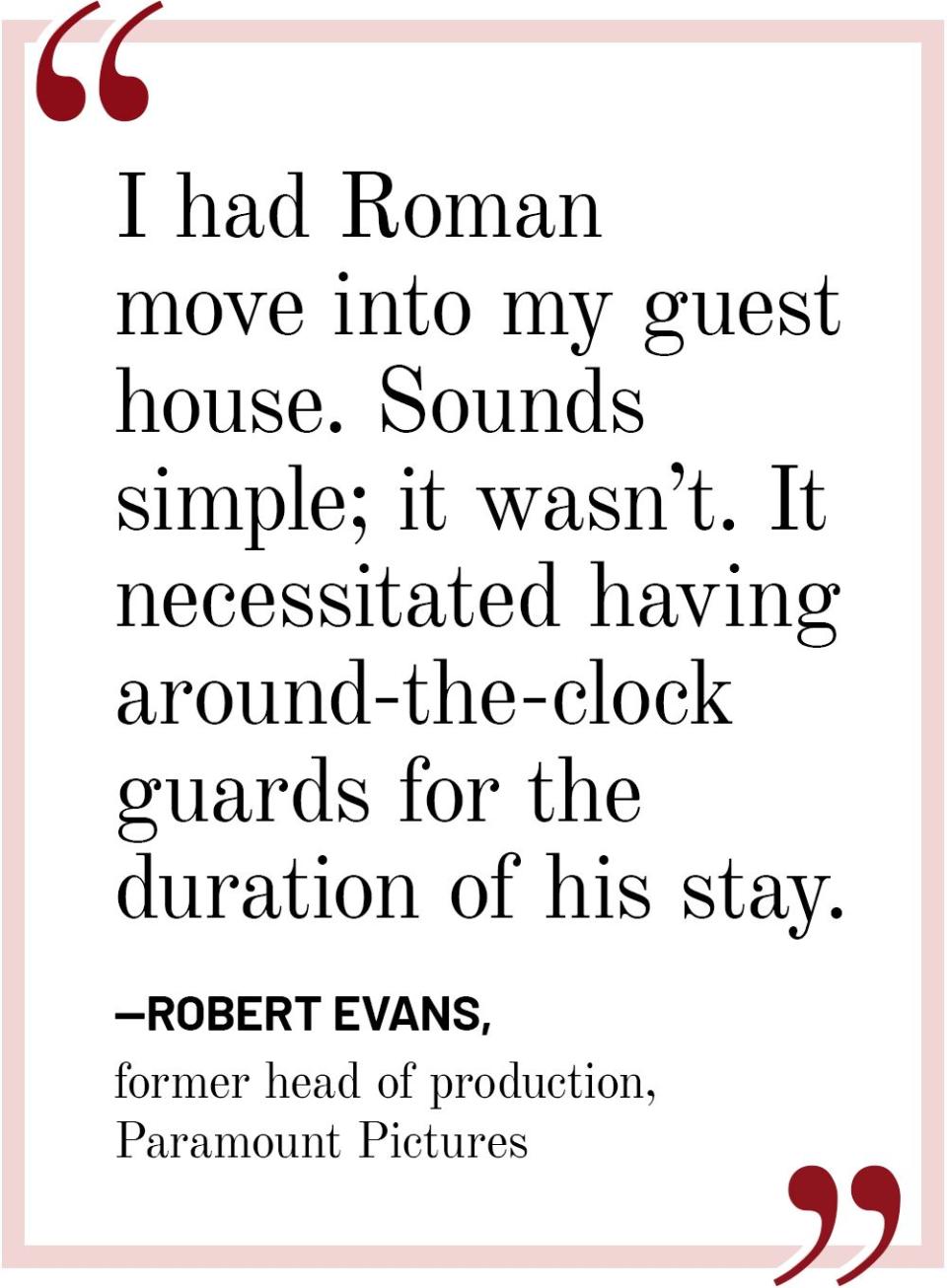
Steven V. Roberts:
“I found the house, but the street was blocked off. I walked around and just gleaned as much as I could from the police and the neighbors. Being, as we were, an East Coast paper, my deadline was nearing, and I didn’t have time to drive home or to the office. I knocked on the door of one of the houses and asked this nice woman if she could lend me a table to write the story and a phone to call it in. I remember she was impressed it was the New York Times, and she set me up on her balcony and gave me a glass of iced tea. Because of her the story made the front page of the Sunday edition.”
Griffin Dunne (actor and director, and Joan Didion and John Gregory Dunne's nephew):
“I was at our house when the call came in. That day is vivid in my memory, because for weeks my best friend Charlie and I had been planning on taking my mother’s car out for a drive that night. We were both 14, and neither of us had driven before, but at two in the morning we snuck out of the house, carrying phone books to sit on, and we pushed the car silently out of the driveway. Charlie took the wheel, and as we drove by Cielo, suddenly all we saw were flashing red lights, helicopters, and fleets of police cars. We just looked at each other and Charlie said, ‘Your mother must want this car back real bad.’”
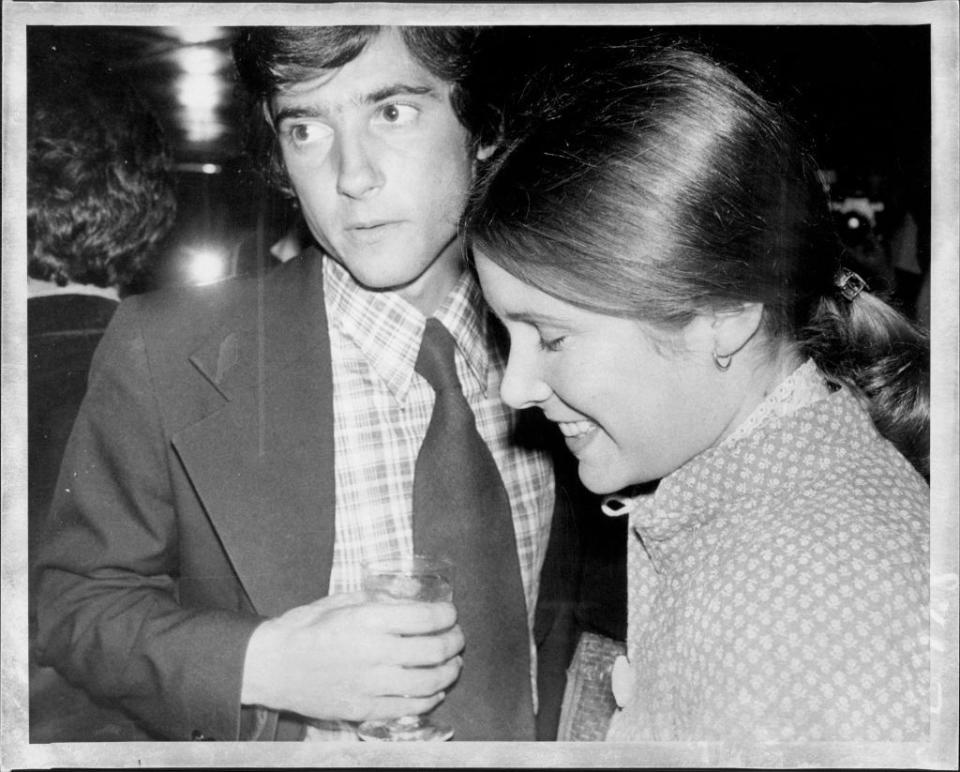
Rona Barrett:
“The phone kept ringing, and all kinds of rumors were already flying, including that whoever did this had a ‘hit list’ of famous people. The police said you could only get official protection if you were shot at, so Metromedia, who I was working for at the time, hired a private detective to protect me.”
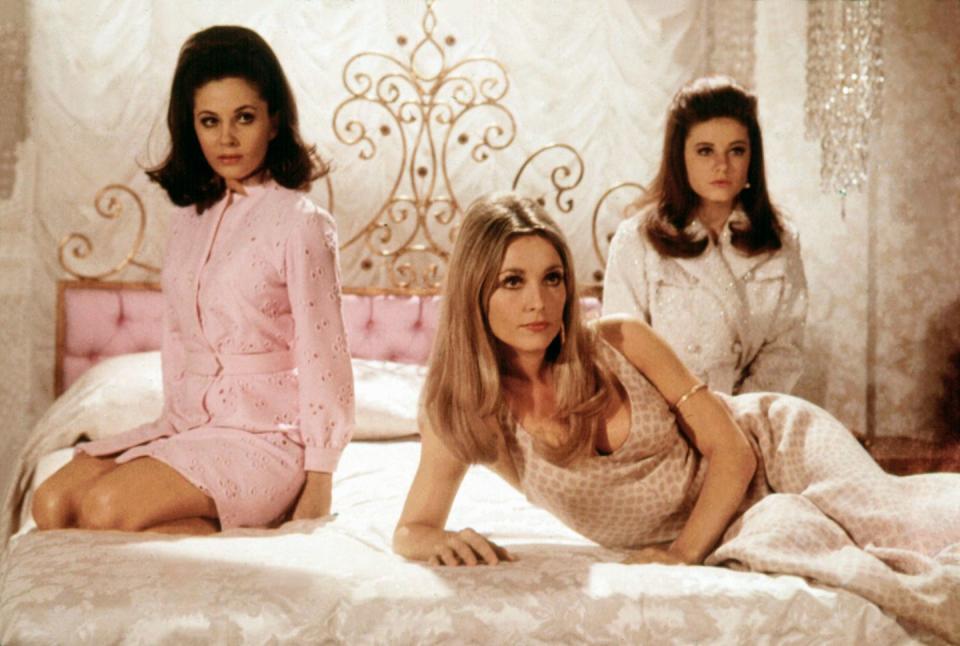
Richard Correll:
“It wasn’t until later that Saturday, when I heard about the murders, that I thought about that carload of kids again, but I figured murderers would quietly leave the scene of their crimes, not carry on like they were having a party. And besides, if I went to the police I would have to tell Harold I had been there with Sue, and I wasn’t about to do that. It wasn’t until months later, when Tex Watson was arrested, that I knew. There was no question he was the guy I saw driving the car.”
The Aftermath
Judy Balaban (author and activist):
“It was the LaBianca murders the next night in another part of town that really shook us. The randomness and violence of the acts made us all feel so vulnerable.”
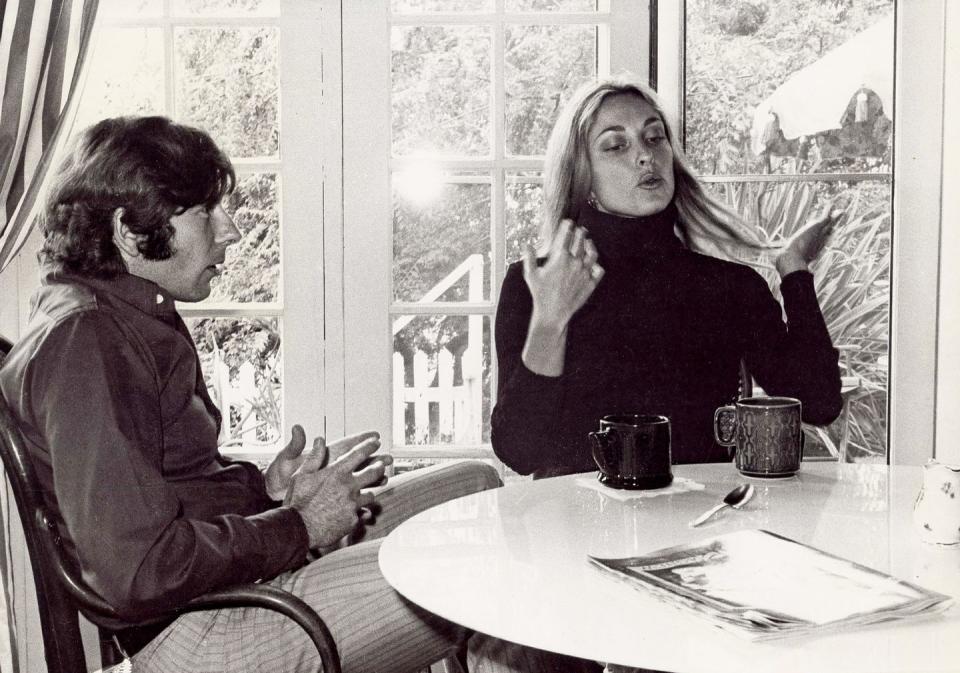
Henry Jaglom:
“The cheap newspapers screamed of Hollywood ‘orgies,’ and ran cheesecake photos of Sharon.”
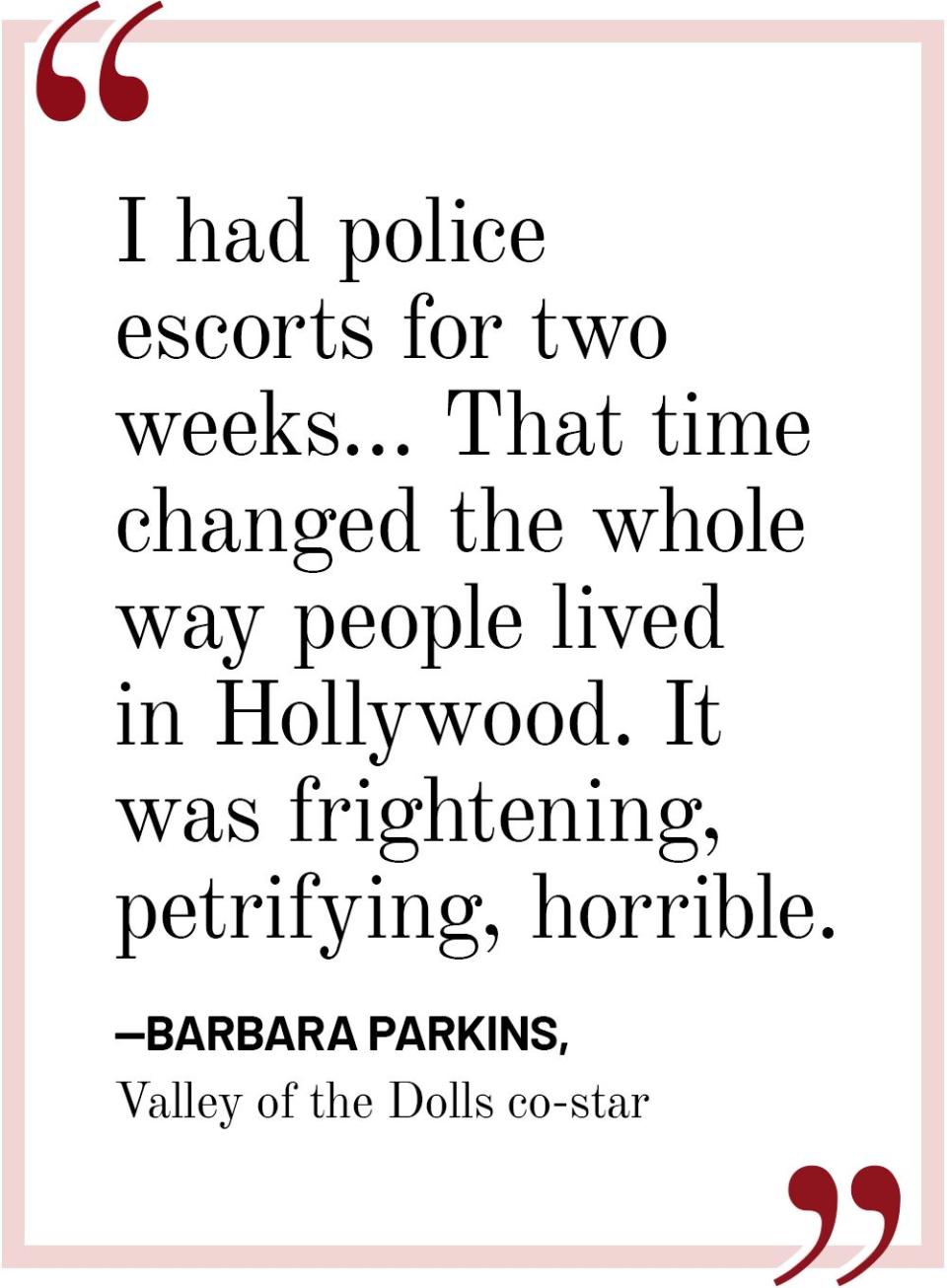
Joan Didion (writing in The White Album):
“Early reports were garbled and contradictory. One caller would say hoods, the next would say chains. There were 20 dead, no, 12, 10, 18. Black masses were imagined, and bad trips blamed. I remember all of the day’s misinformation very clearly, and I also remember this, and wish I did not: I remember that no one was surprised.”
Robert Evans:
“When Roman arrived from London, he hibernated for a few days, sedated by a Paramount doctor. Not wanting to leave him alone, I had Roman move into my guest house. Sounds simple; it wasn’t. It necessitated having around-the-clock guards for the duration of his stay.”
Candice Bergen (writing in Knock Wood):
“Most of Southern California claimed some connection with the slaughter, marveling at their karma, shuddering at having stared death in the face… Los Angeles was in shock. For months, no one talked of anything else. Gates and guard dogs went up everywhere overnight.”
George Hamilton (actor):
“This was wholesale slaughter. No one knew where it was coming from. Hollywood is not known for its bravery, and suddenly doors were locked and the whole place turned dark.”
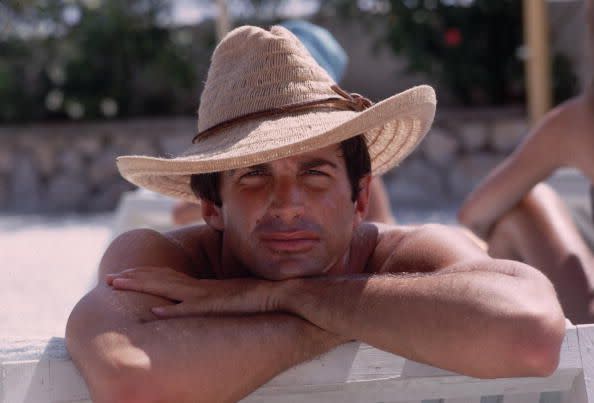
Neile Adams McQueen:
“At Jay’s funeral we sat in the same row as Henry Fonda, James Garner, and Warren Beatty. Steve carried a gun after the murders and had it with him at the funeral.”
Barbara Parkins (Tate’s co-star in Valley of the Dolls, in a radio interview):
“I had police escorts for two weeks… That time changed the whole way people lived in Hollywood. It was frightening, petrifying.”
Griffin Dunne:
“Before that night, most kids in L.A. not old enough to drive got around by hitchhiking. I don’t think I ever hitchhiked again.”
It would be months before Charles Manson and his followers would be identified as the prime suspects, and more than two years before Charles Manson and his followers were convicted of the crimes.
This story appears in the May 2019 issue of Town & Country. Subscribe Now
You Might Also Like

